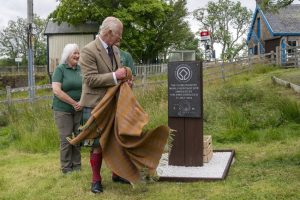The UNESCO World Heritage Committee have followed advice from IUCN – as the official advisor on nature – to inscribe five new sites on the World Heritage List and extend one existing World Heritage site.

The announcement came on Friday, July 26, 2024, during the 46th session of the UNESCO World Heritage Committee in New Delhi, India.
“In line with IUCN’s recommendation, the World Heritage Committee has significantly strengthened the protection of these world’s treasures and sources of exceptional bio- and geodiversity,” said Tim Badman, Director of World Heritage at IUCN.
“These areas are home to the world’s most impressive dunes, exceptional cave-dwelling species, peat bogs and mires, as well as important bird migratory routes, yet are all under increasing pressure. They will benefit from the international recognition that comes from the UNESCO World Heritage List.”
The sites added to the list are:
Te Henua Enata – The Marquesas Islands, French Polynesia
A hotspot for terrestrial and marine biodiversity, and endemic species in the French Overseas Territory of French Polynesia, these islands are home to more than 305 plant species and an exceptional endemism of coastal fish and marine molluscs. It is also of cultural significance in relation to the historical initial occupation of the Marquesas archipelago by the Enata people between the 10th and 19th centuries.
The Flow Country, United Kingdom
This area protects one of the largest peat bog ecosystems remaining in Europe and is the first World Heritage site focussed on peatlands. Its ongoing peat-forming processes continue to sequester carbon on a very large scale. Peat bogs are a crucial defence against climate change, locking away carbon so it is not released as carbon dioxide.
Lençóis Maranhenses National Park, Brazil
The national park has a breathtaking coastal sand dune system of striking contrasts. The park was inscribed for its unique geomorphological formations shaped by the interactions of climate and ocean, including the seasonal transformation through the formation of temporary lakes within extensive coastal barchan sand dunes.
Badain Jaran desert – Towers of Sand and Lakes, China
Located in the remote autonomous region of Inner Mongolia, this site is a world-renowned hyper-arid landscape with an abundance of striking interdunal lakes. It exhibits a myriad of colours caused by the varying salinity and microbial communities unique to each lake.
Migratory Bird Sanctuaries along the Coast of Yellow Sea-Bohai Gulf of China
Upon IUCN’s recommendations, around 10 new components have been added to the existing site. These new areas include some of the most important habitats for migrating birds along the East Asian- Australasian Flyway. IUCN has recommended a further extension in the future to add additional sites that are vital to support migrating birds.
Vjetrenica Cave, Ravno, Bosnia and Herzegovina
Vjetrenica Cave, one of the longest in Bosnia and Herzegovina, is home to one of the world’s most important biodiversity hotspots for cave-dwelling fauna, being home to a total of 231 taxa of subterranean biodiversity. Inscribed onto the World Heritage List, IUCN will work together with the State Party of Bosnia and Herzegovina to implement the recommendations of the Committee to guarantee sufficient water to the cave system and ensure adequate funding.
